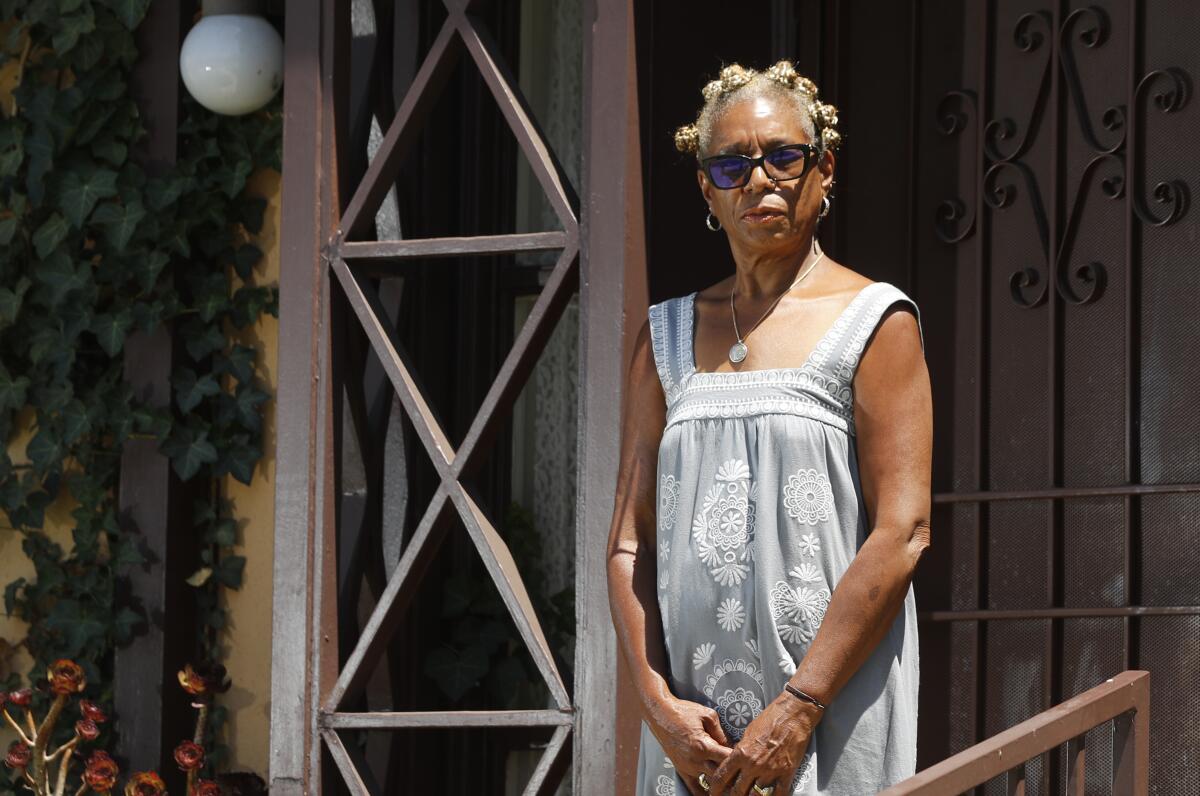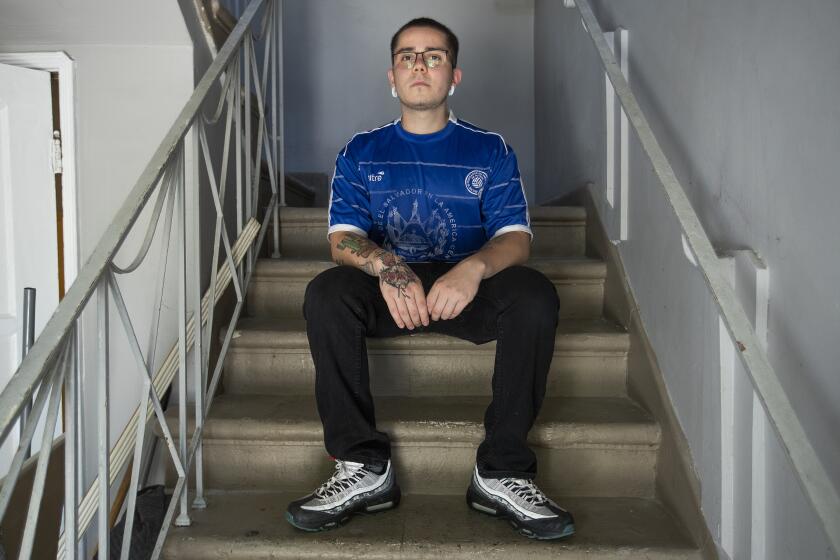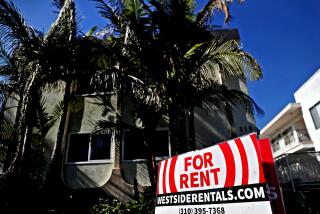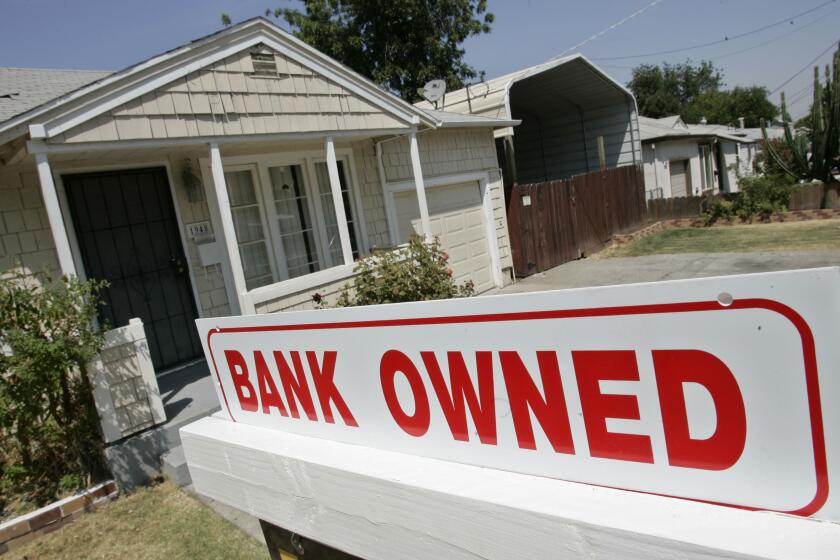Amid the coronavirus pandemic, a Black housing crisis gets worse

Veronica Sance’s rent for her one-bedroom apartment in Los Angeles’ Crenshaw district ate roughly half her paycheck as a receptionist in the entertainment industry.
Then, Sance said, she was wrongfully fired in late 2018 because as a Black woman she was held to different standards from white employees. Sance filed a discrimination complaint and ultimately reached a settlement with the company, which didn’t admit wrongdoing, according to a document she shared.
But the 60-year-old said she’s had trouble finding a full-time job. And her savings and settlement money are dwindling, while a well-paying, part-time job with the U.S. Census Bureau was put on hold because of the coronavirus.
“I am going to be homeless if I am not gainfully employed,” she said. “This is a daily fear that I go to bed with every night.”
Black Americans have long been more likely to pay unaffordable rent and mortgages compared with white people, according to census data. With the current downturn, Black households face a greater probability of being unable to pay, raising the risk some may be forced onto the streets or into shelters already disproportionately occupied by Black people.
Although many factors contribute to those outcomes, multiple experts say the disparities are driven by racism, both past and present, that has systematically starved Black households of access to higher-paying jobs and the ability to build wealth through homeownership, the primary way that families are able to pass money along to the next generation.
That has left them more vulnerable to high housing costs and economic downturns, especially one that has so far hammered people who can’t work from home.
“Black families really do sit at the crosshairs of a racialized economy,” said Lola Smallwood Cuevas, project director for the Center for the Advancement of Racial Equity at the UCLA Labor Center, noting that a host of policies, many tied to housing, put the country on this path.
Such long-running issues are gaining renewed attention since the death of George Floyd while in police custody sparked a national conversation about race and the unequal treatment of people of color, particularly Black Americans.
Unemployment insurance is helping many pay the rent during the COVID-19 pandemic, but those benefits may soon expire, triggering a wave of evictions.
Across the United States, Black people faced the greatest housing insecurity before the crisis. Now, along with Latino workers, they face the greatest job losses.
Black unemployment was 15.4% in June, up 9.6 percentage points since February, while Latino unemployment was 14.5%, up 10.1 percentage points. White unemployment was 10.1%, up seven percentage points.
Nationwide, 55% of Black renters spent more than 30% of their income on housing in 2016, the typical threshold at which experts say costs begin to crowd out other necessities. That compares with 54% of Latino households and 43% of white households, according to an analysis of census data from Harvard University’s Joint Center for Housing Studies.
In California, with its well-documented housing crisis, about 64% of Black renters pay more than 30% of their income for housing, compared with 58% of Latino households and 50% of white households. Nearly 40% of Black California tenants spend more than half of their income on rent.
The percentage of homeowners who pay unaffordable mortgages is smaller, but similar racial disparities exist.
A major factor is income and unemployment. Black unemployment was the highest of any racial group before the virus, and income was also lower.
In 2018, median household income for white people nationwide was nearly $68,000, while for Black households it was about $41,500. Gaps between racial groups’ wealth — assets such as stocks, savings and home equity, minus debts — were even larger, leaving Black families with less to fall back on in times of trouble — for example, a job loss during an economic downturn.
The disparities are rooted in history, experts said. Slavery was the law of the land for more than 200 years, followed by roughly another century of government-sanctioned residential and economic segregation.
The federal government through New Deal-era reforms greatly expanded access to homeownership by backing mortgage loans. But the government viewed Black applicants as a risky investment and largely refused to insure mortgages for Black Americans and discouraged lending in integrated neighborhoods.
It even insured developer loans for suburban developments, including Lakewood, Panorama City and Westchester in Los Angeles County, on the condition that only white people live there, according to Richard Rothstein’s “The Color of Law: A Forgotten History of How Our Government Segregated America.”
G.I. Bill benefits were given out on a discriminatory basis, while many unions and businesses refused to hire Black job seekers or relegated them to low-wage work.
Civil rights legislation in the 1960s outlawed housing and employment discrimination, but, as a group, Black citizens were denied the same opportunity to build wealth as white citizens were during the country’s unprecedented postwar expansion, restricting their ability to invest in education, to start businesses or pass along inheritances to their children.
Today, not only are Black people overrepresented in low-wage jobs, but studies have found the wage gap persists when accounting for different types of jobs and levels of education. Research also shows people who submit resumes with Black-sounding names are less likely to get a call back than those with white-sounding names.
“When you put that all together I don’t think the results are all that surprising,” said Bradley Hardy, a professor of public administration and policy at American University.
On the other side of the affordability equation, there’s evidence Black people pay more for housing than they otherwise should, a continuation of a trend from when they were largely locked out of the white housing market and gouged by landlords and predatory lenders.
A recent study from researchers at the University of Virginia, George Washington University and Southwestern University found that Black renters, compared with white renters, paid a premium for similar units and that the premium grew the whiter a neighborhood was.
In another study, researchers at UC Berkeley found lenders charged Black and Latino borrowers higher interest rates than equivalent white borrowers.
One cause of the unaffordability problem is homes in Black neighborhoods are actually undervalued, which hampers wealth building, said Andre Perry, a fellow at the Brookings Institution.
After controlling for things such as differences in house quality, access to amenities, school rankings and crime, Perry’s research finds that houses in majority Black neighborhoods are worth, on average, $48,000 less than houses in white neighborhoods, leading to a cumulative loss of $156 billion in equity that could have been invested in a variety of ways.
“When policy [in the 1930s] said Black neighborhoods are risky, it set this horrible precedent that is hard to shake,” Perry said. “When people look at Black neighborhoods, it’s almost like they are seeing twice as much crime as there actually is, or the education is twice as bad as it actually is.”
Lower valuations at the same time can be attractive for some white families priced out of other neighborhoods. But once a few start arriving, prices tend to quickly skyrocket, Perry said, theorizing that the change is the result of the judgments of not only white home buyers but also real estate agents, appraisers and lenders.
“There is something going on with the perceived value of whiteness that elevates the price versus the perceived value of Blackness that seems to suppress it,” Perry said.
“It doesn’t take a lot of material changes to the neighborhood,” he said. “There’s just this perception that this is the new [white] destination.”
That change could prove beneficial to the wealth of longtime Black homeowners, but historical inequalities have also helped drive a stark Black-white homeownership gap and reduced the incomes of Black families. So at the same time, rapidly rising prices and rents also threaten to make the area unaffordable for many Black households.
“We’ve got to find ways to restore wealth to individuals over time,” Perry said. “We‘ve got to find ways to reduce the wealth gap that prohibits Black potential home buyers who simply don’t have the wealth to purchase higher-price properties.”
In South Los Angeles, displacement of longtime Black communities has been a growing concern, particularly in neighborhoods around the Expo rail line and the under-construction Crenshaw line that in recent years have seen prices and rents outpace increases countywide.
In some of those neighborhoods — Leimert Park, Jefferson Park and West Adams — the Black population‘s percentage has been on the decline while the white percentage is rising, according to a data analysis from the UCLA Center for Neighborhood Knowledge, which also found that median income growth in those communities outpaced that of the county.
A recent analysis from the Urban Institute didn’t look at race but found the more expensive a region’s housing market, the more likely high-income households would purchase a home in a low-income community.
With the economy in recession, some fear displacement will accelerate in places where Black Americans built communities after battling a host of challenges, including redlining and other policies that once restricted homes in some areas to only white people.
In a May letter to local congressional members, members of L.A.’s Black community urged the federal government to provide relief to renters, homeowners and “good” mom-and-pop landlords, while taking steps to stop home flippers and large investment companies from scooping up distressed properties as they did in the wake of the Great Recession.
Then, Black Americans disproportionately lost their homes, and some lenders reached agreements with the U.S. Department of Justice to settle allegations that they were more likely to push expensive subprime loans to Black applicants and other people of color compared with white loan seekers, even when Black and Latino borrowers qualified for a cheaper, less risky product.
“There is a blood bath again if there is not relief,” said Lori Gay, chief executive of Neighborhood Housing Services of Los Angeles County and one of the signatories to the letter. “Can we please think about how we, with the pandemic, make sure our people don’t get left out again?”
Veronica Sance, the former receptionist, is wondering the same thing. She’s joined the Los Angeles Black Worker Center and local anti-gentrification groups to push for policies to reduce workplace discrimination and support investments to ensure better jobs and affordable housing for the Black community.
She said she was fired because of her race, following write-ups for a perceived unprofessional “tone” and attitude — something she said was inaccurate, wouldn’t have happened if she were white and reflected the racist “angry Black woman” trope.
Among the double standards: She said she often covered for a white receptionist who was frequently late. But when she finally raised objections, Sance said, people in the office viewed her as difficult while the other receptionist was deemed “high-maintenance” and allowed to keep showing up late.
Pauline Avendano, a vice president of marketing for Sance’s former employer, Picture Head, said the company has “zero tolerance for discrimination in the workplace” and that “furthering diversity and inclusion efforts within the entire post-production industry is our unwavering priority.”
In an email, she declined to comment specifically on Sance’s allegations of discriminatory firing, except to say “we are saddened that Ms. Sance has chosen to air her unfounded concerns in this manner.”
Sance said she wanted to share, at the risk of violating a nondisclosure agreement, because of the current national discussion and her belief that “change must come.”
She said now she’s looking for a full-time job, while waiting to see what will happen at her rent-controlled building near an upcoming Crenshaw line stop. She’s struggling to pay her $1,130 monthly rent, which can be raised to the going market rate only if her apartment becomes vacant.
In June, a limited liability company purchased the building after an online ad noted “the property offers investors a unique and rare balance between strong current income and meaningful rental upside for future vacant apartments.”








